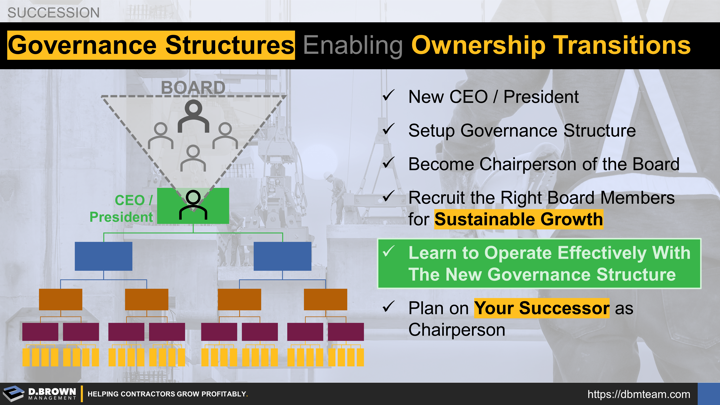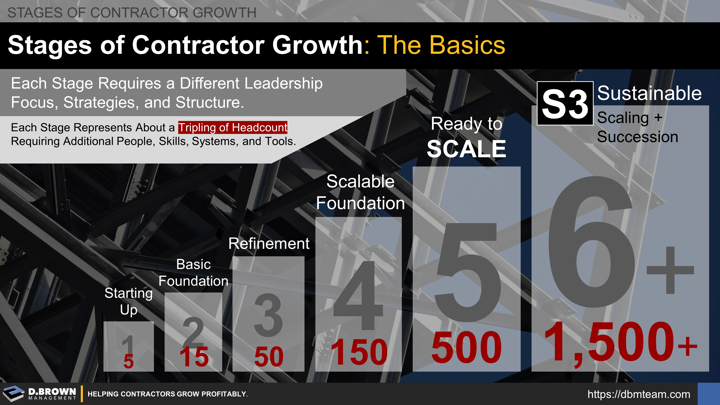This is far more common in the 2nd ownership transition or for contractors with over 150 employees but we have seen some great examples at earlier stages of growth as well.
The challenge is similar to any other stage of growth where a layer of management must be added to the organization. Roles, responsibilities, leadership focus, and systems all take a while to get back into sync with the new management structure.
The Board of Directors has a very different perspective, responsibility level, and time horizon than the CEO/President role so this is often a difficult transition in the first couple years. It is especially difficult for founders as they are often involved in every operating detail of the business. On the surface, "The Checklist" seems simple:
- New CEO/President in place with the ownership transition.
- Set up governance structure - bylaws and other legal stuff.
- Become Chairperson of the Board of Directors.
- Recruit the right board members for sustainable growth in all economic conditions.
- Learn to operate effectively with the new governance structure.
- Plan for the successor to the Chairperson.
Simple is not easy. A great book to start with is The Imperfect Board Member.
Please contact us to talk through your specific situation. We have helped many contractors with ownership transitions and either setting up their first board or significantly improving their current board as the company evolves.
Governance is rarely urgent like daily operations but it is one of the most important things that can be done to help a contractor continue growing sustainably.


